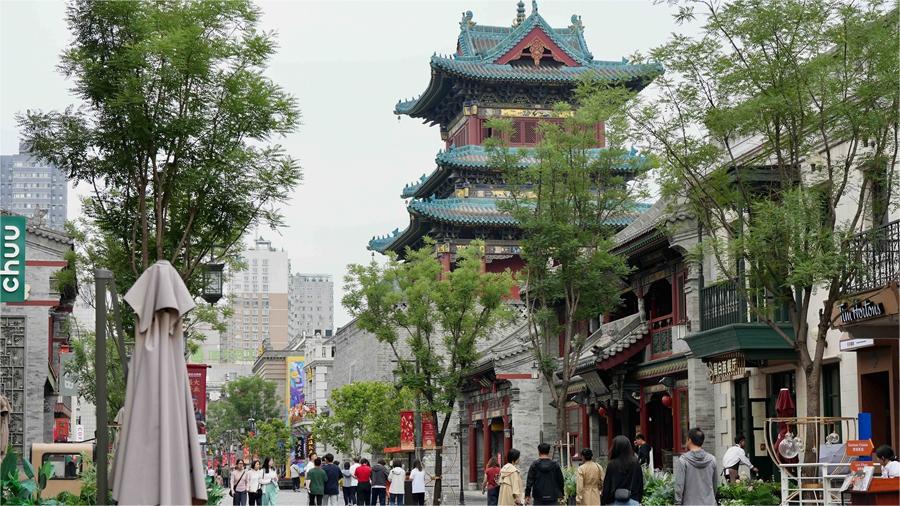Housing oversupply remedy on agenda
China has launched the implementation of a recently announced policy to address surplus housing inventories, which analysts said is likely to significantly expand in size as a potent tool to stabilize the ailing residential property sector.
They made the comments after the People's Bank of China, the country's central bank, held a meeting on Wednesday calling for efforts to ensure effective implementation of the affordable housing re-lending facility and accelerate the destocking of housing inventories.
On May 17, the PBOC announced that it would establish a 300 billion yuan ($42.25 billion) re-lending facility, which will provide funding for State-owned enterprises to buy completed commercial properties for repurposed affordable housing.
The facility, offering funding to banks at an interest rate of 1.75 percent with a term of one year, can be rolled over four times, and will be issued to 21 national banks, including China Development Bank and Postal Savings Bank of China.
Yan Yuejin, director of the Shanghai-based E-house China Research and Development Institution, said that Wednesday's meeting means the country has started implementation of the re-lending facility policy and is expected to see an acceleration in housing inventory destocking in the third quarter.
"The re-lending facility is a crucial policy lever in this round of real estate inventory destocking, which, in turn, is a core focus of the current real estate support policy package," said Yang Haiping, a researcher at the Central University of Finance and Economics' Institute of Securities and Futures.
"This policy tool will complement other measures — including lowering mortgage interest rates, reducing down payment ratios and the 'white list' system to provide financing for real estate developers — in order to jointly stabilize the real estate market," Yang said.
He added that the size of the re-lending facility will very likely expand given the current supply-demand relationship in the housing market and homebuyers' lukewarm sentiment.
Sharing similar sentiments, Robin Xing, chief China economist at Morgan Stanley, said that the 300 billion yuan re-lending quota still falls short of the 3 to 4 trillion yuan needed to lower the scale of housing inventories to a desirable level.
"If local government pilot programs over the coming months give rise to an actionable and replicable mechanism, it could set the foundation for a larger-scale nationwide implementation plan next year with more central government, or quasi-fiscal, backing," Xing said.
This, combined with the already deep housing market correction and some stabilization in the population aged 20 to 34 — who are core aged homebuyers — in the coming two years, suggests that the housing sector will likely become a smaller drag on the Chinese economy next year, he said.
At the PBOC's meeting on Wednesday, it was stressed that the creation of new local hidden debt should be strictly avoided during the implementation of the facility, and moral hazards should be prevented effectively.
Financial media 21jingji further reported on Wednesday that Zou Lan, head of the PBOC's monetary policy department, has required that any city government should select no more than two local SOEs to acquire housing inventories, and selected SOEs should not themselves be government financing vehicles.
The central bank meeting also called for adhering to the principles of voluntary participation, demand-driven procurement and reasonable pricing to ensure the facility's commercial sustainability.
Yang said that these requirements mean that despite the government funding support, the risks associated with housing acquisitions are not undertaken by the government and a market-oriented approach is adhered to.
"The risks are borne by the SOEs as well as the lenders who grant the loans."
Photos
Related Stories
- Economists expect realty bounce soon
- Realty eyes stability and recovery
- Loans issued from China's housing provident fund nears 1.5 trln yuan in 2023
- Shanghai makes it easier for people to buy property there
- Raft of policies injects vitality into China's property market, raising expectations
- China In Perspective: From trade-ins to affordable housing plans, China's innovative approaches to destock housing inventory
- Housing buzz about easing in more cities grows
- Chinese vice premier urges efforts to ensure delivery of housing projects
- Beijing eases restrictions on home-buying outside fifth ring road
- China's real estate market faces regulatory scrutiny
Copyright © 2024 People's Daily Online. All Rights Reserved.









